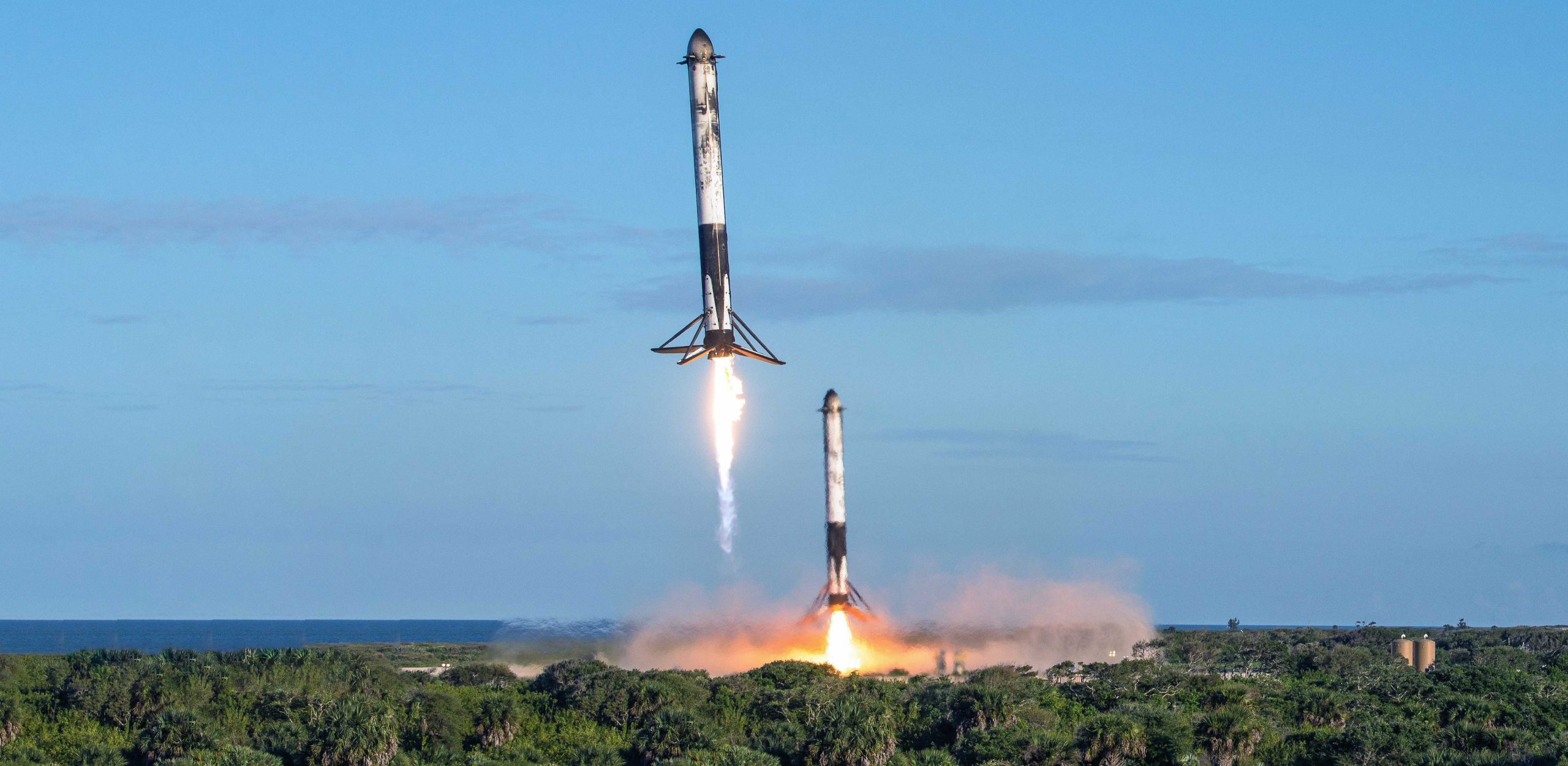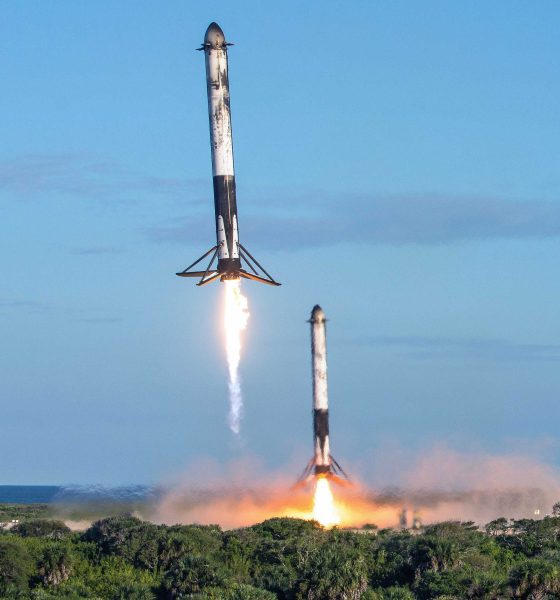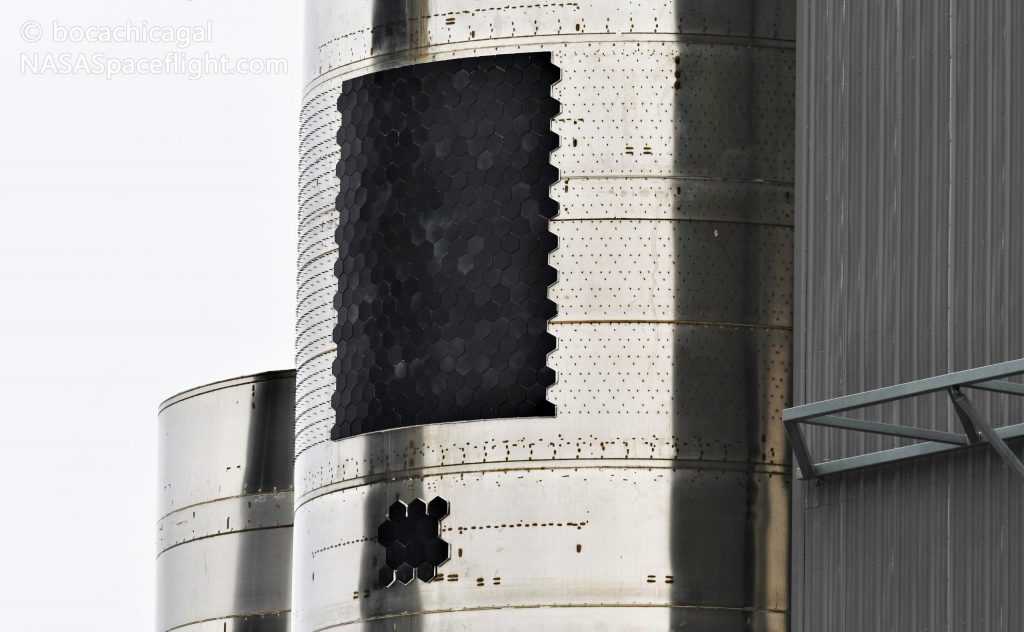

News
SpaceX’s Elon Musk talks Starship heatshield, rocket landings on Joe Rogan podcast
In a multi-hour February 2021 interview with Elon Musk himself, Joe Rogan inexplicably told the famous engineer and CEO that he had never seen a SpaceX rocket landing.
Of course, the 200+ minute conversation did produce a few minor tidbits of interesting information about SpaceX (and much more about Tesla projects), but Rogan’s statement that he’d never seen a SpaceX rocket landing before stole the limelight by a long shot.
SpaceX landed its first Falcon 9 booster – to an extraordinary amount of fanfare – in December 2015. In the five years since that breakthrough, SpaceX has successfully landed Falcon boosters 73 more times. A full 26 of those landings occurred in just the last 12 months. Falcon Heavy – responsible for spectacular, crowd-favorite performances – completed three dual-booster landings and one triple-booster landing between February 2018 and June 2019.
It’s not unimaginable that almost every single human on Earth with some level of access to the internet or social media is at least vaguely aware of or has watched videos of SpaceX landing rockets. To be clear, it is an unequivocal fact – including past comments on landings from Rogan himself – that Rogan has watched SpaceX land Falcon boosters at least once, if not several times. The only real takeaway, fellow readers, is that heavy, long-term drug use is inadvisable.
Cringeworthy moments aside, the interview did produce a select few minor details that weren’t explicitly known before. Most notably, Musk briefly discussed the challenge of developing a heat shield capable of safely returning orbital Starships back to Earth and revealed the main issue that SpaceX is currently working on.

Over the last six or so months, SpaceX has been gradually expanding small installations of heat shield tiles on Starship prototypes, ranging from vehicles that never left the ground to high-altitude Starships SN8 and SN9. Those tile installations have grown from a handful (4-8 on Starhopper in 2019) to literal hundreds on the most recent Starship completed by SpaceX.
During earlier ground testing and more recent hop tests with Starships SN5 and SN6, some of those ceramic composite tiles actually fell off or shattered, perhaps due to vibrations from Raptor engines or mechanical stress caused by Starship shrinking and contracting from thermal expansion. According to Musk, what SpaceX is trying to determine with those coupon-style tests is how to install a heat shield with tiles that are neither too close together or too far apart.

According to Musk, ceramic heat shield tiles placed too close together will ultimately shatter, break, or fall off when subjected to the stresses of Starship operations. Those stresses include the violent vibrations created by rocket propulsion supersonic to hypersonic travel, as well as airframe expansion and contraction that occurs when Starship’s steel hull is cyclically heated and cooled by Raptor burns and cryogenic propellant. In other words, assuming fragile, ceramic tiles are a necessity, they need to be placed far enough apart to avoid all of those possible pitfalls.
On the opposite hand, though, the entire point of Starship’s heat shield is to insulate it from extreme thermal stress during atmospheric reentry. If individual tiles are situated too far apart, superheated gas (plasma) produced during reentry will find its way between those tiles, heating up the structure they’re meant to keep cool. In the case of Starship, its steel hull is more than twice as resilient to reentry heating than comparable vehicles (like the Space Shuttle) with common aluminum frames, but a few millimeters of steel is still not enough to prevent weakening, damage, or outright burn-through in the face of orbital reentry.
In essence, SpaceX has to “get the gaps just right” – not too far apart to protect the airframe from plasma intrusion but not so close together that tiles impact or damage their neighbors as Starship cools and warms.

News
Tesla FSD fleet is nearing 7 billion total miles, including 2.5 billion city miles
As can be seen on Tesla’s official FSD webpage, vehicles equipped with the system have now navigated over 6.99 billion miles.

Tesla’s Full Self-Driving (Supervised) fleet is closing in on almost 7 billion total miles driven, as per data posted by the company on its official FSD webpage.
These figures hint at the massive scale of data fueling Tesla’s rapid FSD improvements, which have been quite notable as of late.
FSD mileage milestones
As can be seen on Tesla’s official FSD webpage, vehicles equipped with the system have now navigated over 6.99 billion miles. Tesla owner and avid FSD tester Whole Mars Catalog also shared a screenshot indicating that from the nearly 7 billion miles traveled by the FSD fleet, more than 2.5 billion miles were driven inside cities.
City miles are particularly valuable for complex urban scenarios like unprotected turns, pedestrian interactions, and traffic lights. This is also the difference-maker for FSD, as only complex solutions, such as Waymo’s self-driving taxis, operate similarly on inner-city streets. And even then, incidents such as the San Francisco blackouts have proven challenging for sensor-rich vehicles like Waymos.
Tesla’s data edge
Tesla has a number of advantages in the autonomous vehicle sector, one of which is the size of its fleet and the number of vehicles training FSD on real-world roads. Tesla’s nearly 7 billion FSD miles then allow the company to roll out updates that make its vehicles behave like they are being driven by experienced drivers, even if they are operating on their own.
So notable are Tesla’s improvements to FSD that NVIDIA Director of Robotics Jim Fan, after experiencing FSD v14, noted that the system is the first AI that passes what he described as a “Physical Turing Test.”
“Despite knowing exactly how robot learning works, I still find it magical watching the steering wheel turn by itself. First it feels surreal, next it becomes routine. Then, like the smartphone, taking it away actively hurts. This is how humanity gets rewired and glued to god-like technologies,” Fan wrote in a post on X.
News
Tesla starts showing how FSD will change lives in Europe
Local officials tested the system on narrow country roads and were impressed by FSD’s smooth, human-like driving, with some calling the service a game-changer for everyday life in areas that are far from urban centers.

Tesla has launched Europe’s first public shuttle service using Full Self-Driving (Supervised) in the rural Eifelkreis Bitburg-Prüm region of Germany, demonstrating how the technology can restore independence and mobility for people who struggle with limited transport options.
Local officials tested the system on narrow country roads and were impressed by FSD’s smooth, human-like driving, with some calling the service a game-changer for everyday life in areas that are far from urban centers.
Officials see real impact on rural residents
Arzfeld Mayor Johannes Kuhl and District Administrator Andreas Kruppert personally tested the Tesla shuttle service. This allowed them to see just how well FSD navigated winding lanes and rural roads confidently. Kruppert said, “Autonomous driving sounds like science fiction to many, but we simply see here that it works totally well in rural regions too.” Kuhl, for his part, also noted that FSD “feels like a very experienced driver.”
The pilot complements the area’s “Citizen Bus” program, which provides on-demand rides for elderly residents who can no longer drive themselves. Tesla Europe shared a video of a demonstration of the service, highlighting how FSD gives people their freedom back, even in places where public transport is not as prevalent.
What the Ministry for Economic Affairs and Transport says
Rhineland-Palatinate’s Minister Daniela Schmitt supported the project, praising the collaboration that made this “first of its kind in Europe” possible. As per the ministry, the rural rollout for the service shows FSD’s potential beyond major cities, and it delivers tangible benefits like grocery runs, doctor visits, and social connections for isolated residents.
“Reliable and flexible mobility is especially vital in rural areas. With the launch of a shuttle service using self-driving vehicles (FSD supervised) by Tesla in the Eifelkreis Bitburg-Prüm, an innovative pilot project is now getting underway that complements local community bus services. It is the first project of its kind in Europe.
“The result is a real gain for rural mobility: greater accessibility, more flexibility and tangible benefits for everyday life. A strong signal for innovation, cooperation and future-oriented mobility beyond urban centers,” the ministry wrote in a LinkedIn post.
News
Tesla China quietly posts Robotaxi-related job listing
Tesla China is currently seeking a Low Voltage Electrical Engineer to work on circuit board design for the company’s autonomous vehicles.

Tesla has posted a new job listing in Shanghai explicitly tied to its Robotaxi program, fueling speculation that the company is preparing to launch its dedicated autonomous ride-hailing service in China.
As noted in the listing, Tesla China is currently seeking a Low Voltage Electrical Engineer to work on circuit board design for the company’s autonomous vehicles.
Robotaxi-specific role
The listing, which was shared on social media platform X by industry watcher @tslaming, suggested that Tesla China is looking to fill the role urgently. The job listing itself specifically mentions that the person hired for the role will be working on the Low Voltage Hardware team, which would design the circuit boards that would serve as the nervous system of the Robotaxi.
Key tasks for the role, as indicated in the job listing, include collaboration with PCB layout, firmware, mechanical, program management, and validation teams, among other responsibilities. The role is based in Shanghai.
China Robotaxi launch
China represents a massive potential market for robotaxis, with its dense urban centers and supportive policies in select cities. Tesla has limited permission to roll out FSD in the country, though despite this, its vehicles have been hailed as among the best in the market when it comes to autonomous features. So far, at least, it appears that China supports Tesla’s FSD and Robotaxi rollout.
This was hinted at in November, when Tesla brought the Cybercab to the 8th China International Import Expo (CIIE) in Shanghai, marking the first time that the autonomous two-seater was brought to the Asia-Pacific region. The vehicle, despite not having a release date in China, received a significant amount of interest among the event’s attendees.








